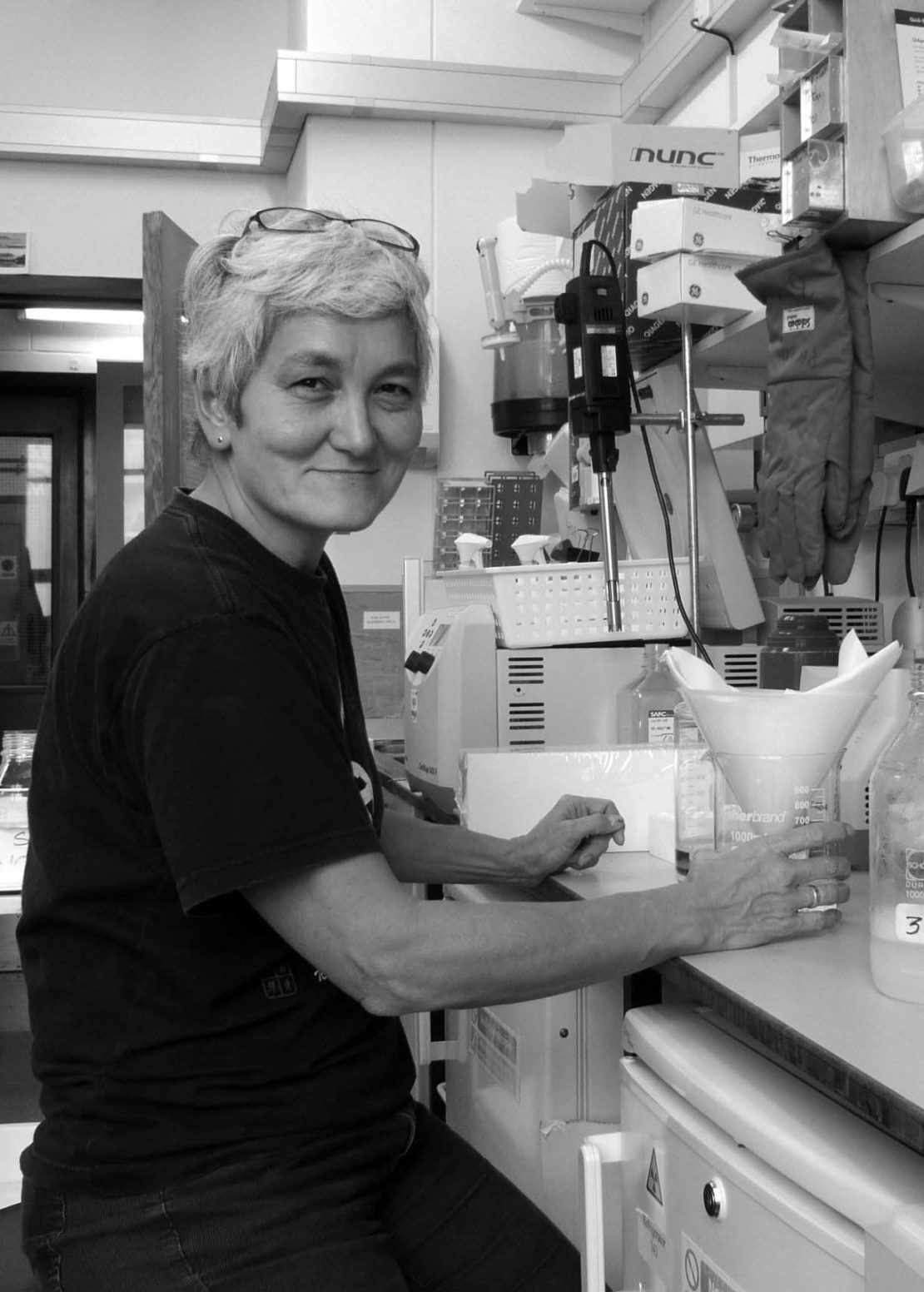Practical science: life in a lab
Pat Edwards, Research Support, Structural Studies, MRC Laboratory of Molecular Biology (LMB), Cambridge

I suppose I am an archetypal technician.
We have a lot of new people just trying to work out what’s going on, so I’m a knowledge base for a lot of the things, the methods and technologies, which go on in the lab.We do structural biology of membrane proteins,
which has huge implications for medicine. I do anything from expressing those proteins, to purification and crystallisation. I work with my boss and a postdoc on a project that will change depending on who that is. My work is acknowledged and I am always on the papers that result from it.My background is an applied biology degree.
I was interested in doing science, but not in doing a PhD – I’m not very good at studying, but I’m a very practical person. My first job was actually here in the LMB, and I guess I really learned the trade, if you could call it that, in the lab – which is really the more practical side of science.If a postdoc or a PhD student comes in, they’ll expect to do most of their work themselves.
But then if people have basic needs, training needs, I’m here to help them.I’ve been here for 33 years.
People come in as postdocs or on PhDs for anything from two to four years, or more. Students come in with various backgrounds, so they may need to learn about running a centrifuge, or cloning a gene, or protein purification – they need to be helped along the way. But I certainly won’t be doing the work for them.The LMB is a very special place.
Because of the long-term funding from the Medical Research Council, group leaders don’t have to seek their own grants and can get on with the science instead of worrying about buying equipment. Recently I worked with a postdoc from another group, which resulted in me being on their paper. He saw me working with mammalian cells, asked me about how to do it, and together we could grow and use them without worrying who was paying for it or being ‘territorial’ about time or equipment. The atmosphere promotes good science and collaboration.It’s changed a lot.
We’re in a new building, which we moved into 18 months ago, and have security on the door 24 hours – you have to sign in, log in and out all the time. The old, 1960s building was a lot more basic.People used to smoke all the time.
They used to smoke while they were doing experiments. We used to be able to eat and have parties in the lab. We’re no longer allowed to do that.I’ve heard stories of people doing radioactive experiments in the 1960s, wandering around the lab with radioactive samples.
Today things are much tighter – everything has to be accounted for. I think that’s probably a result of the sheer amount of science that’s being done now.Experiments tend to move much more quickly, too.
You might have waited weeks for a result, whereas now you might get it in an afternoon.The best part of the job is the people.
People come and go, but I’ve made friends with people from all over the world. My life is made interesting by the fact that the lab’s changing all the time.The new building is amazing.
It’s a wonderful, state-of-the-art building for LMB’s future – but it hasn’t made any difference to the ethos of the science. The people who come here are very motivated to find a solution for a certain problem. That hasn’t changed.